#natural burial mornington
Explore tagged Tumblr posts
Text
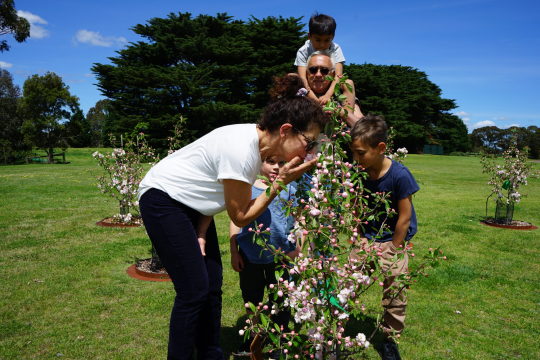
#green funeral mornington#memorial garden mornington#tree services in mornington#natural burial mornington
0 notes
Text
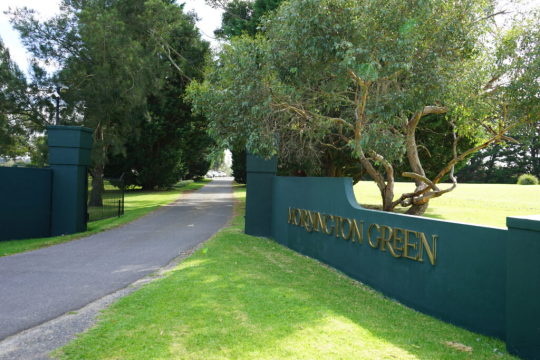
Be Part of this Extraordinary Project and Reserve your Tree Today
Call us on (03) 9059 4959 and we’ll be happy to answer any questions you may have. Alternatively, fill out the form below and we will send you further information with links to videos, pricing and project information.
DOWNLOAD BROCHURE
#Tree Services in Mornington#Natural Burial Mornington#Green Funeral Mornington#Memorial Garden Mornington
0 notes
Text
What’s the difference between traditional funerals and Mornington Green?
youtube
We explore the differences between a traditional funeral and Mornington Green. Whilst traditional funerals can oftentimes feel disconnected and serve as a reminder of loss, a Mornington Green ceremony is designed to be a beautiful and comforting space that is deeply connected to nature.
In this way, we can connect to the beauty of life and our part within nature, and this can help support us through the hardest processes within that natural cycle of life. Join us as we discuss the benefits of creating a place that opens us up and is full of beauty, helping us through the grieving process in a way that comes naturally to us.
Transcript
Almost all of us will have been to a funeral at some point. Often, people say they didn’t like it or it felt disconnected or didn’t resonate with them, sometimes they’re great, but almost always, people don’t want to go back to the cemetery or to that place, and there’s a reason for it.
I mean, you walk through the gates and it all just reminds you of loss.
Generally, people are sort of pulled in and they become quiet, they become reserved, and if it is a funeral of someone that really meant a lot to you, that process and the way that you feel in there can turn that grief into something much darker.
I mean, often, pull people into a depressed state or prolong the period of grief, ’cause that’s what they’re connecting to, is the loss, rather than to that beautiful life that meant so much to them.
And so, the difference here is that, especially if you pre-plan and you’ve got a tree here today and you bring your family out regularly, it might be for birthdays, it might be just on a sunny day and you have picnics, it’s a place that they come to know and it’s a beautiful place, it’s deep in nature and it’s full of beauty that changes from season to season, so that when they come here, even if it is for your memorial, they’re coming to a place that as soon as you walk in the gates, it doesn’t pull you in, it actually opens you up, and it’s full of beauty.
And instead of it, you know, making people sort of silent and quiet, we often hear people chatting.
Sounds weird, but people laughing and people just really opening up in this environment, it’s important, ’cause they’re left to grieve the way that they should in a way that comes naturally to them.
Also, the other important thing, is often, they’re coming back to a place they know, and in doing so, it’s a reminder of the times I’ve had with you and your life, rather than a reminder of the loss, and there’s so much science that goes behind this, and Melbourne Uni has a great article called “Beyond Blue to Green”, and it talks about this, that there’s a healing power of nature that helps people through that grieving process, helps expedite it, and helps sort of reduce the chances of someone falling into that depressive state, and I think in large, it’s one, because it connects them to the beauty of life and the fact that they’re still got a life to live, but also, the grandness of nature and their part within nature and your part within nature, and that this is one of those parts of that cycle, and it can be a real comfort.
So I think, you know, in essence, that’s the big difference, is a process that is in tune with nature and supports you and your family through the hardest processes within that natural cycle of life. For more information, reach out to us on our contact page.
#Tree Services in Mornington#Natural Burial Mornington#Green Funeral Mornington#Memorial Garden Mornington#Youtube
0 notes
Text
When choosing where to have a funeral your choices have now grown.
Restaurants, bars, reception centres, wineries, gardens, sports clubs, private homes the choices are now only limited by your imagination.
Funerals have always traditionally been held in churches however as society becomes more secular it would appear that many are putting great thought into the meaning and relevance of the funeral and naturally where it should be held. Since the 1960s funeral homes had become an alternative to the church and whilst many families still opted for misters or priests, the funeral didn’t seem to have the church like feel that the traditional church service did. At the same time, many churches would not allow the coffin to be opened within the church in order for families to say their last goodbyes, The funeral home provided greater flexibility.
#gallery-0-9 { margin: auto; } #gallery-0-9 .gallery-item { float: left; margin-top: 10px; text-align: center; width: 50%; } #gallery-0-9 img { border: 2px solid #cfcfcf; } #gallery-0-9 .gallery-caption { margin-left: 0; } /* see gallery_shortcode() in wp-includes/media.php */
Dalywaters Estate, Mornington
West Beach Bathers Pavilion
From the 1980-s funeral homes began to offer simple refreshment services, typically tea, coffee sandwiches etc, the type of food you may have received in a church hall. Indeed some funeral homes around Australia began to offer licencing options. This was seen as quite a provocative move and created much discussion, but move forward a few decades and licensed venues are now almost seen as a prerequisite for many mourners.
The 90s began to see technology take hold. Where once music options may have been an organist or piano and hymns, more contemporary music options were becoming more common. Filming and live streaming of funerals was now available and starting to appear in many funeral homes. Simple framed pictures were now being replaced by full-blown audiovisual productions.
Technology has provided many additional opportunities for families, but the rate of technological change has been a double-edged sword. The cost of maintaining the latest equipment has been burdensome and expensive for many funeral homes, who were not geared for this.
Enter the function venues, facilities which were often idle, not having any daytime or weekday events, many of which have relished at the opportunity of doing either funerals, memorial services or wakes. The coffin once seen as almost taboo to have anywhere else other than a church or funeral home is now often accepted into these venues without any concern. Perhaps this reflects the changing way in which the community now sees funeral service and greater comfort when services are held in places with more meaning and relevance to mourners.
#gallery-0-10 { margin: auto; } #gallery-0-10 .gallery-item { float: left; margin-top: 10px; text-align: center; width: 50%; } #gallery-0-10 img { border: 2px solid #cfcfcf; } #gallery-0-10 .gallery-caption { margin-left: 0; } /* see gallery_shortcode() in wp-includes/media.php */
The Garden House, Royal Botanical Gardenss
Elwood Bathers
Most Melbourne Crematoriums have now undergone significant refurbishment, installing state of the art audiovisual equipment, refreshment lounges and large commercial kitchens and executive chefs, sourced from some of the countries finest catering companies. One large cemetery trust is serving approximately 3000 meal portions a day to mourners. Indeed some of the cemeteries now provide functions to those outside of the funeral circle, including weddings, corporate events etc.
Wakes can be anywhere, from your home to selected venues, food choices can be important for many
Although there has been a significant increase in alternate funeral venue locations, the church still holds a pivotal focus for many families. The key to the selection of a funeral venue is relevance and meaning and without consideration of these two factors, the funeral can sometimes seem hollow to some.
Finally, there are those that do not wish to celebrate or commemorate in a formal way and the rise of unattended or direct cremation is increasing at a rapid rate. we have all heard someone say, “don’t fuss over me, just bury me in a cardboard box”. For many, this has now become a reality. However, burial is not normally the chosen form of disposition in Melbourne, cremation is.
Sandringham Yacht Club, over incredible views across Port Phillip Bay
So why are families choosing unattended cremation services? For some, it is cost as it is the lowest cost option available, but for most, it is the simplest and least complicated types of services. Many families still have some type of service or event after the cremation and the can diverse, from large memorial services to small intimate lunches.
So in planning your funeral event location here are some key guides:
Ensure you use a funeral professional with the skill and ear to listen to what you want from the day.
Choose services and locations that are relevant to you and your family.
Services can be held at any time, day, evening weekends, so choose a time that is relevant
Don’t choose services based on what you think you must have or have had before.
Keep in mind the number of mourners likely to attend
Robert Nelson is a fifth-generation funeral director and founder of Robert Nelson Funerals. Based in Moorabbin they service all Melbourne Areas, including Mornington and Bellarine Peninsulas.
Choosing Your funeral venue, the where and how as to where people are now having funeral and memorial services across Melbourne When choosing where to have a funeral your choices have now grown. Restaurants, bars, reception centres, wineries, gardens, sports clubs, private homes the choices are now only limited by your imagination.
#Affordable Funerals#Enviro funeral#Environmental Funeral#Funeral Director#Funeral Director Bayside#Funeral Director Melbourne#Funeral Home#Funeral Home Melbourne#Funeral Home Moorabbin#Funeral Parlour Melbourne#Funeral Parlour Moorabbin#Funeral Venues#Funerals#Funerals Australia#Funerals By The Bay Funerals At Sandringham Yacht Club#meaningful funerals#Memorial Services#Robert Nelson#Robert Nelson Funerals#The Preffered Choice#Underatkers Moorabbin#Undertakers Melbourne#Wakes
0 notes
Text
Cremation Tree Planting To Honor Your Loved One
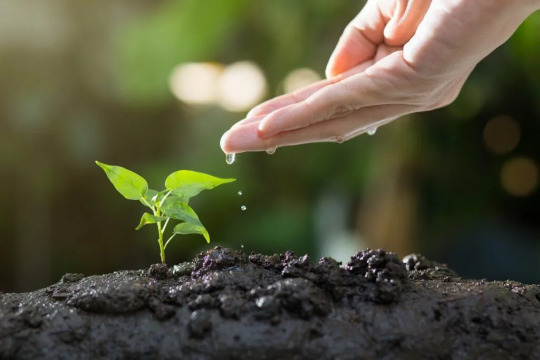
When a cherished family member or friend passes away, finding a way to honor their memory that feels right can be challenging for us. Recently, more and more people are turning to a unique and environmentally friendly alternative: cremation tree planting, a way of turning their loved one’s cremated ashes into a living tree memorial.
How to turn ashes into a tree? Cremated ashes are mixed with soil and placed either in a special biodegradable urn or directly into the ground where the ashes are combined with soil where a tree is planted. The ashes must first be treated to neutralize harmful properties and convert them into nutrients that support tree growth. Advanced formulas, such as the Living Legacy Formula, detoxify the ash and restore essential soil biology for optimal tree health.
You can learn more here!
It is important to note that biodegradable urns have several practical and health concerns. In Australia, they are illegal to use because they may be harmful to soil and plant health as the ash can have a negative impact on the surrounding environment. It is recommended to properly treat the ashes and use a non-biodegradable urn to minimize any potential harm.
Imagine a tree growing from the essence of someone you love!. This is the beautiful idea behind cremation tree planting. As the tree takes root and flourishes, it is powered by nourishment from the ashes, creating a deep bond between your loved one and the growing life.
Ashes in a tree is a symbol of transformation and new beginnings. It represents the idea that although your loved one has passed on, their essence can live on in another form, nourishing new life and bringing comfort to you and your loved ones.
Your decision to turn ashes into a tree is a very personal one, but it offers many advantages over traditional burial methods. It’s a wonderful way to show your love of nature and make a positive impact on the environment. Planting a memorial tree helps create a greener world and leaves a beautiful legacy for the person you have lost, unlike traditional burials which can harm the environment. Unlike a headstone that remains the same, a tree is a living being that evolves throughout the seasons. Visiting this special tree can become a cherished tradition for your family and friends, providing a peaceful place to reflect, share memories and feel close to the person you miss.
Learn here to know what types of trees you can plant!
The place you choose to plant a tree with human ashes is a personal decision. Some people prefer a quiet corner in their own garden, where they can take care of the tree and watch it grow as their own life unfolds. Others may choose a public park or a special memorial forest, where the tree can become part of a larger landscape, providing a feeling of connection with nature that everyone from you and your family can enjoy.
As well as the emotional significance, planting a cremation tree offers real environmental benefits. Trees are vital to the health of our planet. They absorb harmful carbon dioxide, release life-giving oxygen and provide a home for all kinds of creatures. By planting a memorial tree, you’re not only honoring your loved one, but also contributing to a healthier and more vibrant planet.
If the idea of planting a cremation tree appeals to you, whether for yourself or someone you’ve lost, it’s important to do your research and find a company you trust to guide you through the process. Many reputable companies offer a range of services, from help with paperwork and permits to expert advice on choosing the right tree and how to care for it.
At Mornington Green we offer you the service of planting a tree in the garden with the cremated ashes of the deceased. This provides a lasting legacy for your family and friends to visit and cherish, while helping to regenerate life and offset the carbon footprint of the deceased. Our garden offers a more personal and natural alternative to traditional funeral practices, with no hidden fees or ongoing costs for your family.
#green funeral mornington#memorial garden mornington#natural burial mornington#tree services in mornington
0 notes
Text
Cremation Tree Planting To Honor Your Loved One
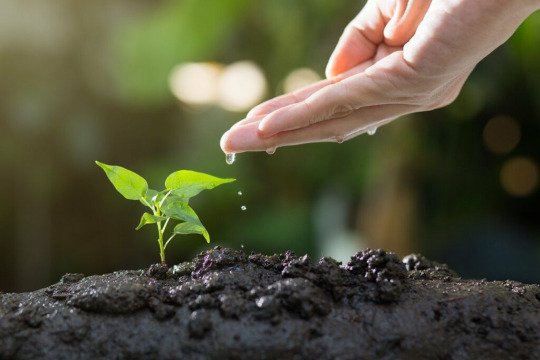
When a cherished family member or friend passes away, finding a way to honor their memory that feels right can be challenging for us. Recently, more and more people are turning to a unique and environmentally friendly alternative: cremation tree planting, a way of turning their loved one’s cremated ashes into a living tree memorial.
How to turn ashes into a tree? Cremated ashes are mixed with soil and placed either in a special biodegradable urn or directly into the ground where the ashes are combined with soil where a tree is planted. The ashes must first be treated to neutralize harmful properties and convert them into nutrients that support tree growth. Advanced formulas, such as the Living Legacy Formula, detoxify the ash and restore essential soil biology for optimal tree health.
You can learn more here!
It is important to note that biodegradable urns have several practical and health concerns. In Australia, they are illegal to use because they may be harmful to soil and plant health as the ash can have a negative impact on the surrounding environment. It is recommended to properly treat the ashes and use a non-biodegradable urn to minimize any potential harm.
Imagine a tree growing from the essence of someone you love!. This is the beautiful idea behind cremation tree planting. As the tree takes root and flourishes, it is powered by nourishment from the ashes, creating a deep bond between your loved one and the growing life.
Ashes in a tree is a symbol of transformation and new beginnings. It represents the idea that although your loved one has passed on, their essence can live on in another form, nourishing new life and bringing comfort to you and your loved ones.
Your decision to turn ashes into a tree is a very personal one, but it offers many advantages over traditional burial methods. It’s a wonderful way to show your love of nature and make a positive impact on the environment. Planting a memorial tree helps create a greener world and leaves a beautiful legacy for the person you have lost, unlike traditional burials which can harm the environment. Unlike a headstone that remains the same, a tree is a living being that evolves throughout the seasons. Visiting this special tree can become a cherished tradition for your family and friends, providing a peaceful place to reflect, share memories and feel close to the person you miss.
Learn here to know what types of trees you can plant!
The place you choose to plant a tree with human ashes is a personal decision. Some people prefer a quiet corner in their own garden, where they can take care of the tree and watch it grow as their own life unfolds. Others may choose a public park or a special memorial forest, where the tree can become part of a larger landscape, providing a feeling of connection with nature that everyone from you and your family can enjoy.
As well as the emotional significance, planting a cremation tree offers real environmental benefits. Trees are vital to the health of our planet. They absorb harmful carbon dioxide, release life-giving oxygen and provide a home for all kinds of creatures. By planting a memorial tree, you’re not only honoring your loved one, but also contributing to a healthier and more vibrant planet.
If the idea of planting a cremation tree appeals to you, whether for yourself or someone you’ve lost, it’s important to do your research and find a company you trust to guide you through the process. Many reputable companies offer a range of services, from help with paperwork and permits to expert advice on choosing the right tree and how to care for it.
At Mornington Green we offer you the service of planting a tree in the garden with the cremated ashes of the deceased. This provides a lasting legacy for your family and friends to visit and cherish, while helping to regenerate life and offset the carbon footprint of the deceased. Our garden offers a more personal and natural alternative to traditional funeral practices, with no hidden fees or ongoing costs for your family.
#Tree Services in Mornington#memorial garden mornington#green funeral mornington#natural burial mornington
0 notes
Text
What To Do With Cremation Ashes: Understanding Cremation
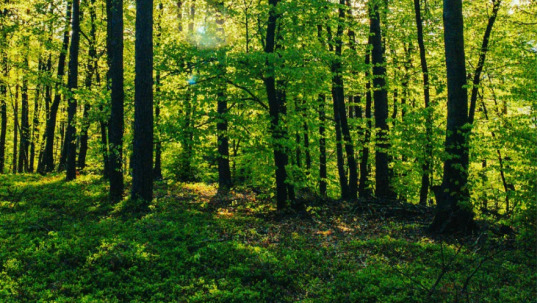
With the environmental impacts of cemeteries becoming well known and people beginning to consider cremation more often, you may be wondering what exactly cremation entails. What are cremation ashes made of? What can you do with human ashes after cremation?
We’re going to answer the most popular questions we get asked, so that hopefully you can make the best choice for you and your loved ones.
What are cremation ashes?
Cremation ashes, also known as ‘human ashes’ or even ‘cremains’, are the resulting product of cremation: an alternate to traditional casket-burials that involves burning and storing the ashes of the deceased. Much like regular ash, cremation ashes are grey-ish white, however they tend to have a coarse, almost sand-like texture.
What are cremation ashes made of?
Human ashes are made of incinerated bone fragments. The exact composition of the ashes depends on the individual’s weight, diet, age and genetic make-up; however, most people will have a chemical signature made up of calcium phosphate as well as some other salts and minerals.
Cremated ashes aren’t made of organs, tissue or water as these components of the body are incinerated by the heat. While body modifications such as implants or metal fillings/surgical devices may remain after cremation, these are taken out of the ashes.
Although the body is cremated inside of the coffin, the high heats of crematorium furnaces mean that the coffins are completely incinerated and aren’t part of the final cremains.
How are cremation ashes made?
Human ashes are made through cremation. This process is generally conducted by a crematorium, who will prepare and burn the body for a fee (we aren’t a crematorium, although we do have partners we can recommend to you). After checking to make sure any incompatible materials (such as pacemakers) are removed, the body, secure inside a flammable coffin, is placed in the crematorium furnace. Only one body is placed in the furnace at a time. Crematorium furnace temperatures reach 800-1000 degrees Celsius, with the process taking roughly 1-4 hours depending on the size of the body and furnace model. The ashes are then taken to be cooled and sorted for any metal remains. Afterwards, the ashes are returned to the family so they can decide how to honour them.
What to do with cremation ashes?
Depending on the wishes or your loved one and family, there are many things you can do with cremation ashes to honour your loved ones. We’ve compiled 5 popular choices below:
Scatter them
One of the most common things to do with human ashes is to scatter them over a place that holds significance to your loved one. Whether it be in their garden, over the ocean or even from a plane, there are plenty of options to choose from. However, there are a few things to consider before choosing this option; To start, it is important to get permission from any landowners if you intend to scatter ashes over private property. Similarly, boat or plane owners should be advised if you want to scatter ashes while employing their service. It is also crucial to check with local environment guidelines to ensure that you won’t damage the environment in the process.
Keep them in an Urn
This more traditional way of keeping ashes allows you to return to and visit your loved one much like a regular gravestone would. You can choose to house them at certain funeral sites or alternatively keep them in your home with your family. Urns are a great option as they are highly customisable; They can be made specifically for your loved one, with many options for material, colour, shape, and even engravings. Alternatively, funeral homes often offer premade urns that can be cheaper while still meeting your individual needs.
Bury them
Much like traditional remains, cremated ashes can also be buried. They are most often buried within an urn. Burial locations could include private property, urn burial sites or even in a mausoleum. As a benefit, generally these burials cost less than traditional ones, but, cremated ashes are highly alkaline and are therefore harmful to the environment.
Make something from them
A variety of services exist to create memorable ways to use ashes. From jewellery to fireworks or even tattoo ink, there is something just right for everyone. Most services focus on one type of product, so do your research and find someone that suits your individual needs.
Infuse them with a tree
Nature is comforting to many, especially when we are processing grief. At Mornington Green, we birth new life from loss by planting Living Legacy Trees into ash-infused soil, allowing your loved one to live on as a tree. Not only is this process environmentally friendly, but families are able to personalise the way they honour the deceased by choosing from a variety of trees with different personalities and symbolism.
Larger trees can be used for couples or even families, and ashes can be infused later than the initial planting, meaning that you have the option to be buried with your loved one even if you pass at different times.
We hope you have learnt a little more about cremation ashes. If you are interested in learning more about Living Legacy Trees, these are some of the many trees in Melbourne that you can choose from.
With the environmental impacts of cemeteries becoming well known and people beginning to consider cremation more often, you may be wondering what exactly cremation entails. What are cremation ashes made of? What can you do with human ashes after cremation? We’re going to answer the most popular questions we get asked, so that hopefully you can make the best choice for you and your loved ones.
#green funeral mornington#memorial garden mornington#natural burial mornington#tree services in mornington
0 notes
Text
What To Do With Cremation Ashes: Understanding Cremation
With the environmental impacts of cemeteries becoming well known and people beginning to consider cremation more often, you may be wondering what exactly cremation entails. What are cremation ashes made of? What can you do with human ashes after cremation?
We’re going to answer the most popular questions we get asked, so that hopefully you can make the best choice for you and your loved ones.
What are cremation ashes?
Cremation ashes, also known as ‘human ashes’ or even ‘cremains’, are the resulting product of cremation: an alternate to traditional casket-burials that involves burning and storing the ashes of the deceased. Much like regular ash, cremation ashes are grey-ish white, however they tend to have a coarse, almost sand-like texture.
What are cremation ashes made of?
Human ashes are made of incinerated bone fragments. The exact composition of the ashes depends on the individual’s weight, diet, age and genetic make-up; however, most people will have a chemical signature made up of calcium phosphate as well as some other salts and minerals.
Cremated ashes aren’t made of organs, tissue or water as these components of the body are incinerated by the heat. While body modifications such as implants or metal fillings/surgical devices may remain after cremation, these are taken out of the ashes.
Although the body is cremated inside of the coffin, the high heats of crematorium furnaces mean that the coffins are completely incinerated and aren’t part of the final cremains.
How are cremation ashes made?
Human ashes are made through cremation. This process is generally conducted by a crematorium, who will prepare and burn the body for a fee (we aren’t a crematorium, although we do have partners we can recommend to you). After checking to make sure any incompatible materials (such as pacemakers) are removed, the body, secure inside a flammable coffin, is placed in the crematorium furnace. Only one body is placed in the furnace at a time. Crematorium furnace temperatures reach 800-1000 degrees Celsius, with the process taking roughly 1-4 hours depending on the size of the body and furnace model. The ashes are then taken to be cooled and sorted for any metal remains. Afterwards, the ashes are returned to the family so they can decide how to honour them.
What to do with cremation ashes?
Depending on the wishes or your loved one and family, there are many things you can do with cremation ashes to honour your loved ones. We’ve compiled 5 popular choices below:
Scatter them
One of the most common things to do with human ashes is to scatter them over a place that holds significance to your loved one. Whether it be in their garden, over the ocean or even from a plane, there are plenty of options to choose from. However, there are a few things to consider before choosing this option; To start, it is important to get permission from any landowners if you intend to scatter ashes over private property. Similarly, boat or plane owners should be advised if you want to scatter ashes while employing their service. It is also crucial to check with local environment guidelines to ensure that you won’t damage the environment in the process.
Keep them in an Urn
This more traditional way of keeping ashes allows you to return to and visit your loved one much like a regular gravestone would. You can choose to house them at certain funeral sites or alternatively keep them in your home with your family. Urns are a great option as they are highly customisable; They can be made specifically for your loved one, with many options for material, colour, shape, and even engravings. Alternatively, funeral homes often offer premade urns that can be cheaper while still meeting your individual needs.
Bury them
Much like traditional remains, cremated ashes can also be buried. They are most often buried within an urn. Burial locations could include private property, urn burial sites or even in a mausoleum. As a benefit, generally these burials cost less than traditional ones, but, cremated ashes are highly alkaline and are therefore harmful to the environment.
Make something from them
A variety of services exist to create memorable ways to use ashes. From jewellery to fireworks or even tattoo ink, there is something just right for everyone. Most services focus on one type of product, so do your research and find someone that suits your individual needs.
Infuse them with a tree
Nature is comforting to many, especially when we are processing grief. At Mornington Green, we birth new life from loss by planting Living Legacy Trees into ash-infused soil, allowing your loved one to live on as a tree. Not only is this process environmentally friendly, but families are able to personalise the way they honour the deceased by choosing from a variety of trees with different personalities and symbolism.
Larger trees can be used for couples or even families, and ashes can be infused later than the initial planting, meaning that you have the option to be buried with your loved one even if you pass at different times.
We hope you have learnt a little more about cremation ashes. If you are interested in learning more about Living Legacy Trees, these are some of the many trees in Melbourne that you can choose from.
With the environmental impacts of cemeteries becoming well known and people beginning to consider cremation more often, you may be wondering what exactly cremation entails. What are cremation ashes made of? What can you do with human ashes after cremation? We’re going to answer the most popular questions we get asked, so that hopefully you can make the best choice for you and your loved ones.
#green funeral mornington#memorial garden mornington#natural burial mornington#tree services in mornington
0 notes
Text
#Tree Services in Mornington#Natural Burial Mornington#Green Funeral Mornington#Memorial Garden Mornington
0 notes
Text
#Tree Services in Mornington#Natural Burial Mornington#Green Funeral Mornington#Memorial Garden Mornington
0 notes
Text
#Tree Services in Mornington#Natural Burial Mornington#Green Funeral Mornington#Memorial Garden Mornington
0 notes
Text
The Cost of Cremation in Australia
Death is an event that affects us all at some point in our lives. When a loved one passes away, it can be a tragic time that fills us up with grief. This is why choosing how to keep and preserve your loved one’s body can help you feel more in control during a time of overwhelming sadness.
When one dies, one can choose to be buried in the ground or at sea. But as time goes on, more and more Australians are choosing cremation. Of the 128,500 Australians who die each year, around 70% of those are choosing cremation — a number that is rising by 0.5% each year. In Victoria, more than 65% of people are choosing cremation each year.
What is cremation?
Cremation is a well-known and less expensive alternative to traditional burials in which the body is reduced to a fine powder by extreme heat. Unlike traditional burials, which require years for the body to decompose underground, cremation just takes a few hours.
During cremation, the body is placed in a coffin or casket and then placed in a cremator. This procedure shrinks the body to a few bones. Following that, the residual fragments are ground into a powder usually referred to as “ashes” using a specialised processor. After that, the ashes are transferred to a temporary container or a family-provided urn.
Types of cremation
There are two main types of cremation options: direct cremation, and cremation with a service.
Direct Cremation
During a direct cremation, there is no formal service or ceremony involved. The family can then just hold a private gathering of their own choice after the cremation.
With direct cremation, the deceased is collected, then transported to the crematorium for the actual cremation, and then taken back to be stored at their premises until the family decides what to do with the ashes. The cost of cremation without service varies depending on the state that you live in and it can vary between $2,000 to $8,000.
Cremation with a Service
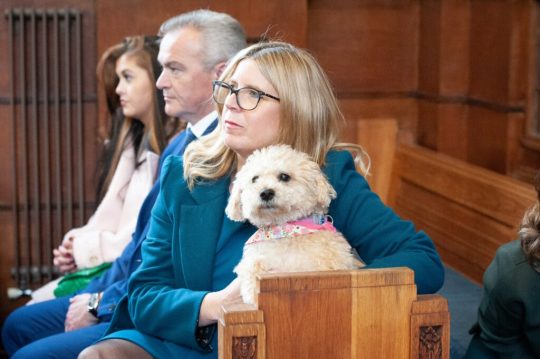
Fees included in the cremation
The cremation cost usually includes all the services needed to carry out a cremation, such as travel, removal, death registration, funeral director services, administration, transfer and care of remains and a basic cremation container (casket). The additional costs can include a death certificate ($69), a memorial book ($40) and flowers ($300).
Here are some other fees included in the price of cremation:
Cremation Fee: The fee for the use of a crematorium chapel for service, attendance at service by crematorium staff and the actual process of cremation, including collection and return of ashes after cooling. The cost varies depending on whether you choose a weekday or weekend and whether you require music.
Doctor’s Fees: These can be anywhere between $150 to $300 depending on the type of doctor’s certificate required, whether they are local or interstate, whether they need to travel to where a person has passed away – particularly if in a hospital or aged care facility – or the person has passed away interstate.
Funeral Home Fee: This covers administration, staff, and facilities 24 hours per day, 365 days per year. Also included is attendance at the place of death (often in hospital) removal from residence or hospital (including any after-hours charges that may apply).
Please know that these fees are not the same everywhere. They will differ from state to state.
Is cremation cheaper than a burial?
Cremation is more affordable than a burial in most cases. It also presents more options than the traditional funeral, which makes it highly appealing to many modern families.
It’s important to know that the cost of cremation in Australia is not a fixed price. There are a number of different cremation costs that you need to consider. These vary depending on where you live and which crematorium you choose. For example, in Brisbane, the average cost of cremation is $4,600, while the average cost of cremation in Melbourne is closer to $5,000.
Moreover, cremations in Victoria are government-regulated. They’re regulated by the Cemeteries and Crematoria Act 2003, as amended by the Cemeteries and Crematoria Regulations 2015. Under this law, cremations must be done by government cemeteries, and so the cost of cremation in Victoria is more expensive because they’re from the government.

Our Process in Cremation
At Mornington Green, we understand that such a difficult time in people’s lives doesn’t need any more additional hassles. So, here’s our simple process:
We respect your choice.
Whatever you decide or wish to do for your loved one, we will listen and support you on them. It’s your decision to make, including specifying the company of your choice for cremation services. It will be up to you.
2. Our partner funeral houses
Our trusted partners for cremation services are Chapter House and Mornington Peninsula Funerals. We are confident that you are in excellent hands with these two funeral houses. At Chapter Houses, the standard cost of cremation is reduced if you choose to infuse those ashes into a Living Legacy Tree at Mornington Green. Please note that we do not take a commission or add any fees for customers who want to go through the cremation process with us, we’re here to help.
3. Introduction to our Partners
If you choose to have a cremation through us, we will begin the process and introduce you to your funeral house of choice. During this process, we can assist you with any forms or information that needs to be submitted. Once you have organised your plans with the funeral house, we’ll liaise with the Funeral Director to ensure a smooth process for you. The next step after this is choosing a tree for the cremated ashes to be planted into.
What are cremation ashes made from?
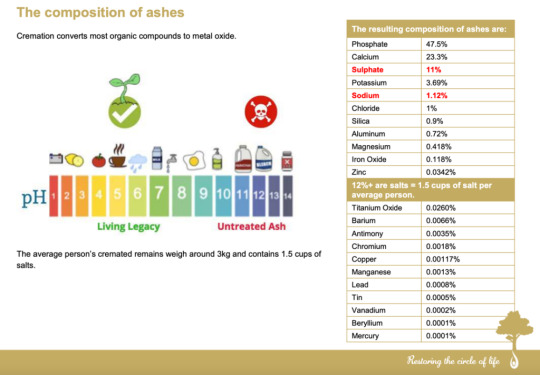
Turn to a Tree and Be a Beautiful Memory
Cremation gives people the chance to put their friends and family to rest in a dignified way without paying a lot for a traditional burial. If you want to remember your loved ones after cremation, Mornington Green gives you a wonderful and unique opportunity to do so.
Do you have any questions? Contact us via our contact page or call us today on (03) 9059 4959 to find out more about cremation through Mornington Green.
When one dies, one can choose to be buried in the ground or at sea. But as time goes on, more and more Australians are choosing cremation. Of the 128,500 Australians who die each year, around 70% of those are choosing cremation — a number that is rising by 0.5% each year.
0 notes
Text
Funeral Bonds vs. Funeral Insurance vs. Living Legacy Trees: Which is best?
Did you know that funeral costs have steadily risen in the last decade? The median price of a traditional funeral in Australia is now around $19,000. And while it may be manageable for some families, it costs others their long-term plans in the present. So, what can you do to keep the costs low?
In this article, we will offer you three different solutions to your problem: You can choose to:
invest your money in funeral bonds,
establish your funeral insurance,
or infuse your ashes into a Living Legacy Tree at Mornington Green
Even though thinking about death is something we want to put off, ironically the cost of inaction is far more expensive. People are using these three options to plan ahead and save their families the heavy financial and emotional burden of planning a funeral.
And although we specialise in Legacy Trees, our goal is for you to make the right decision for you and your family. So, we will do that by ensuring you have the complete picture of each funeral planning method.
We will give you the pros and cons of each one according to these considerations:
Your current financial capability,
The funeral’s inclusions, and
Your preferred payment methods.
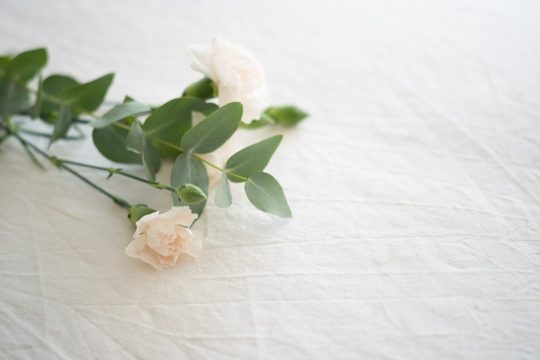
Funeral Bonds
Funeral bonds are basically like trust funds but only for funeral-related spending. Many consider funeral bonds because it basically works like a bank’s time deposit: you give your provider a lump sum or monthly instalments depending on what you want to earn at the end. You can avail of a funeral bond from a friendly society or life insurance company that you trust. When you pass away, your chosen beneficiary can take the money out, but the funds can only be used for your funeral.
How do funeral bonds work?
Funeral bonds are funds under your name that you can only use when paying for your funeral expenditures. These funds are only available if the account holder dies, so before that, funeral bonds are inaccessible.
The management company determines the terms of a funeral bond. A funeral bond typically includes a disclosure statement outlining how it works. After the funeral costs are paid, any money left over goes to your estate.
Pros:
It is a safe and flexible way to save for your funeral expenses.
Funeral bonds are a secure, capital-guaranteed investment (meaning your investment can never be less than the amounts you have contributed). Additionally, they are governed by state and federal laws to guarantee that investments are not excessively risky. You can invest a lump sum, make ad-hoc instalments, or pay $50 a month through direct debit to contribute.
Funds are exempt from the assets and income test.
As of July 1, 2022, contributions up to $14,000 are considered Exempt Assets for pension and aged care assessments.
Funds can roll over.
Suppose that the funeral benefit is bigger than the cost of your funeral, the remaining amount goes to your estate.
It encourages saving, and you gain interest, adding value to your funeral fund.
Since you can’t get the money until after you die, it encourages saving. Even if you get tempted to access your funds and use the money for other things, you won’t be able to.
Moreover, over time, your savings will keep growing. A funeral bond is an investment. Your money is professionally invested in a variety of asset classes in a way that is safe and gives you a higher rate of return than if it were just sitting in a savings account. You can get an annual bonus (return) which is not personally taxable. The accumulated dividends are credited to your policy and paid out as part of your funeral benefit.
You can change funeral directors.
You can name a funeral director you want to work with and change that person at any time. For example, if you’ve chosen a funeral director but had to move away from that area, you can simply change it to another funeral director.
Cons:
You only get what you’ve put and earned in the fund.
If you purchase a bond that pays out $8,000 after 10 years, but you pass away before then, your estate will only be entitled to the amount you have paid into the fund plus any investment profits generated with those funds—nothing more, nothing less.
The returns are minimal and may not be able to cope with the current inflation rates.
Although the funeral bond fund’s investments are designed to keep up with inflation and rising funeral costs, your fund may underperform or not grow rapidly enough to match expenditures. As of June 2022, inflation rates are 6.1% in Australia. Therefore, there is a high possibility that as years go by and with continued price increases, your funeral bond won’t be able to cover your funeral costs.
If the funeral benefit is less than the amount of your funeral costs, your family will have to pay the rest.

Funeral Insurance
Funeral insurance is a type of life insurance. You sign a contract with an insurer and agree to pay premiums for a certain amount of coverage over a certain period of time. The amount covered is usually much less than life insurance as it is designed to only cover the funeral cost rather than providing for dependents.
How does funeral insurance work?
You pay premiums (ongoing payments) every month or every two weeks for a fixed amount of coverage. Most of the time, you can choose between $5,000 and $15,000 in coverage, which will be given to your family when you die.
Funeral insurance is not a way to save money for funeral costs. You buy insurance to pay for these costs at some point in the future.
When you die, a funeral insurance policy gives your family a lump sum payment that they can use to pay for your funeral costs.
Pros:
You’re immediately covered
Funeral insurance works exactly like how insurance would. Once you avail it, you’re immediately covered for the total insured amount. Only accidental death is covered in the first 1–2 years of the policy. This means, for example, that if you die after 3 years, your payout could be more than the amount of the premiums you’ve paid up to that point.
The beneficiaries can use the lump sum to take care of a wide range of immediate expenses
Depending on your insurer, you can receive a minimum of $5,000 and a maximum of $15,000. Premiums are based on your circumstances to ensure that you are adequately covered.
You can quickly claim it
It is paid out immediately, within 3 to 7 days, when you place your claim. This means you don’t have to stress about how you will pay for expenses. Your beneficiaries will just need to provide proof of a certified death certificate to the insurer.
Smaller payments than prepaid funerals
Funeral insurance premiums require a much smaller monthly payment than prepaid funerals, which must be paid for all at once or in instalments over a few years. If you get one early, you’re also at an advantage because your premiums will likely be lower than average.
It can be preferable to a particular demographic
People with numerous health problems and seniors who can’t get life insurance because of age limits may benefit from funeral insurance.
Cons:
There are no refunds, and there are exclusions.
Like all insurance policies, if you lapse in payments or voluntarily withdraw at any time, you lose all the money you have paid in premiums until that point. There would be no refunds. Exclusions also apply in the first few years. For example, you may not be covered if you die of a fatal illness or suicide. Only accidental death is covered in the first 1-2 years of the policy. That’s why it’s important to check the terms and conditions of your policy.
It can cost you more than the death benefit and actual funeral costs.
Each plan has a specific fixed payout (regardless of whether funeral costs have risen). You have to keep paying until death, so if you get one early and live a long life, the premiums you pay could add up to much more than your actual funeral costs.
Premiums will increase over time.
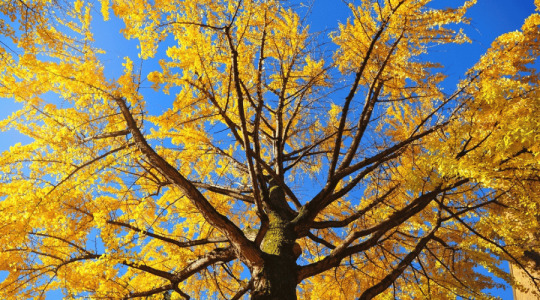
Mornington Green
How about skipping traditional methods and becoming a living memory when you die? Let your ashes live on trees with Mornington Green.
What is Mornington Green?
At Mornington Green, your ashes are given a scientific treatment that turns them into living molecules. They are infused with a beautiful tree of your choice in a quiet forest, where your loved ones can visit you all year and see your tree grow.
A conservation agreement protects your tree, so the land it is on can’t be built on or cut down. Each tree also gets a plaque made just for you and will always be there.
Pros:
It’s an eco-friendly option.
Living Legacy has perfected a way to turn ash into living molecules so that a person’s energy can live on through trees. So when you choose the Mornington Green way, you’re choosing to live as part of nature again. Moreover, when you plant a tree with us, you join a growing group of people making new forests and homes for endangered animals like the mainland Quokka and Black Cockatoo. Lastly, for every founder’s package bought, Mornington Green offers 400 extra trees to be planted in honour of the person.
It revolutionises the way we think of “cemeteries”.
From the moment you enter Mornington Green’s beautiful and lush gardens, it’s as if you’re transported to a green paradise. Mornington Green offers a high-quality experience that tries to change how we think about memorials by connecting people to the beauty of nature that their lives make. This beautiful site on the Mornington Peninsula was carefully chosen for its excellent conditions, landscapes, and distance from fire zones.
Costs are upfront and fixed regardless of the inflation rate.
The costs are upfront from $7,000 + GST, which is more than half of the average price of traditional methods. You also don’t have to worry about the inflation rate affecting your funeral costs in the future. At Mornington Green, you can prepare for your funeral at today’s price and not at what it will cost in the future.
It is cheaper than a traditional burial.
It is cheaper because you don’t have to buy all the add-ons that come with traditional burials. Usually, the extra funeral funds from families can be used for the ceremony or other practical uses.
It is highly rated.
It is the first botanical memorial garden whose only goal is to grow Living Legacy Trees. Mornington Green is proud to offer the Australian Government’s best practice standard for cremated ash, which is used all over the country. Industry leaders like the Greater Metropolitan Cemeteries Trust (GMCT), Northern Cemeteries in NSW, the City of Brisbane, Tobin Brothers, and Chapter House use Living Legacy as the best practice standard for sustainable memorials. Furthermore, Mornington Green maintain 4.9 stars on Google reviews.
Cons:
It is not for everyone.
For example, some denominations of other religions have cremation out of the picture because it’s incompatible with their customs. Some families still see traditional burials as the “normal” way of sending a loved one off. A permanent burial spot can also be more sacred for others. This means that cremation may be out of the picture.
Mornington Green’s Botanical Garden is only located in Victoria.
If your loved ones are in another state, they may not be able to visit you or join in on community events. Or if you suddenly move to another place, it will be difficult to arrange your funeral once you pass away.
Direct cremation is still the cheapest option.
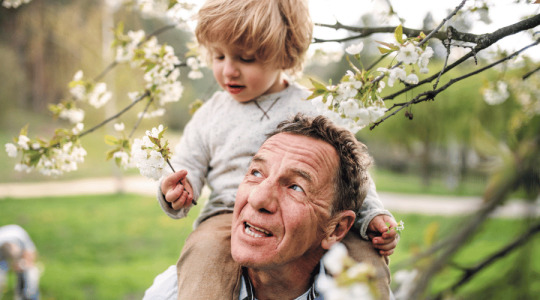
WATCH: What is the difference between Mornington Green and a traditional burial?
In conclusion…
Now that you’re aware of all three choices for financing funerals, check out this table that summarises the pros and cons of all: Financial Plan / MethodPros: Cons: Funeral Bonds – Safe and flexible – Exempt from from the assets and income test – Can roll over – Encourages saving and you gain interest – Change funeral directors quickly – You only get what you’re entitled to – Interest may not be enough to cover inflation – Not guaranteed to cover entire funeral costs. Funeral Insurance – Immediate coverage – Beneficiaries get a lump sum – Quick claim – Smaller payments than prepaid funerals more preferable to a certain demographic. – There are no refunds and there are exclusions. – Can be more expensive in the long run with continued premiums than actual funeral costs – Premiums will increase over time. Living Legacy Trees / Non-traditional methods – Eco-friendly – Revolutionises “cemeteries” – Costs are upfront and fixed regardless of the inflation rate – It is cheaper than traditional burial – It is highly-rated– It is not for everyone – Only located in Victoria – Direct cremation is still the cheapest option.
Each of these offerings has pros and cons. As you can see, as long as you know your financial capabilities and preferences, you can definitely land on the best decision for you and your loved ones as you pass away. Our article has hopefully helped you in one way or another in deciding when the inevitable happens.
We hope this has helped. If you have any more questions, feel free to contact us via our contact page or call us today at (03) 9059 4959 to learn more.
#Tree Services in Mornington#Natural Burial Mornington#Green Funeral Mornington#Memorial Garden Mornington
1 note
·
View note
Text
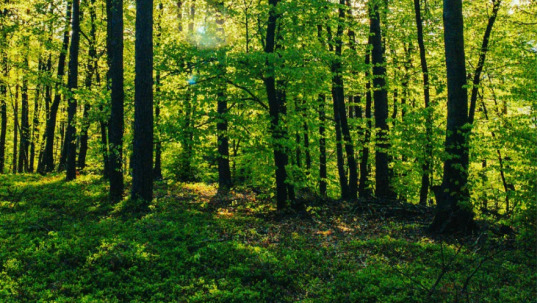
Mornington Green was founded in Melbourne to create a positive impact for people, place and planet. This beautiful site in the Mornington Peninsula was meticulously chosen for its prime conditions, landscapes, and distance from fire zones.
#Tree Services in Mornington#Natural Burial Mornington#Green Funeral Mornington#Memorial Garden Mornington
0 notes
Text
How Do I Know My Tree is Protected?
youtube
A common question we get asked is, “How do I know my tree will be protected at Mornington Green?”
Rightfully so, it’s a very important question. We thought we would create a video that answers this question for you. Tree protection involves several measures, including legal and property requirements, vegetative overlays, financial commitments and more.
Transcript
Every one of our customers will ask us, well, how do I know my tree’s protected? And obviously that’s a big question.
What we’re doing is brand new and it’s a new approach. So we have to think about new ways to ensure that and how to protect the trees. And for me personally, I’m going to be planted here. My family’s here. So I’ve got to think about things that go beyond me and beyond when I’m not necessarily working here and there’s new people.
So there’s a myriad of things we’ve done already. Things we’ve got in play to start soon, and then there’s going to be more things that we in action as time goes along. We’re also open to hearing thoughts from our customers, and some of the things we’ve done have been in response to ideas customers have had.
One of them is legal and property-wise.
So as part of our permit, when we applied to the council for this unique approach, they said, well, in order for you to get this permit, we need to have the plans for all the trees that you’re going to plant. Then all of those trees, in addition to the pathways et cetera that you’re putting in, they all have to be rolled out and maintained forever as part of this permit. This requirement is attached to the title and anybody that wants to take it over, they take that with that same requirement on the title.
The other bit is we’ve got a vegetative overlay that restricts us from removing trees. We’re working with the National Trust and the Heritage Trust to put overlays on the site. So Conservation Covenant and a Heritage Covenant on the site. They need to wait until this stage is fully planned out which we’re about a month away from doing before we have that on play.
But the other side is financial.
So financially we do something beyond what I don’t think anybody else does in any industry. So we put aside 20% of the tree sales into a not-for-profit and that not-for-profit’s been created by a law firm that only does charities and not-for-profits. It’s got a really clear mandate and that is the continual care and maintenance of this site. So that trust will be funded up until it’s got enough funds to ensure you we can pay eight full-time staff to run this place just off the interest based on those funds.
So it’s sort of the opposite issue to what cemeteries have. Cemeteries have this great legal framework with government related bodies but they run out of money. Anybody that goes past an old cemetery sees that they don’t have any money left to maintain the site and they actually get real expensive, of course, all the concrete breaks.
Whereas here we go from having juvenile trees that are really quite expensive and hard to grow to having mature forests that don’t need much work but also having lots of money in that not-for-profit there ready to take care of the site.
That’s just part of it. One of the great ideas our customers had was, well, we should have a review committee, an incorporated association that actually sits and can review and audit the not-for-profits books once a year, have a look and check that they’re doing everything above and above. Make sure they’re using the funds wisely.
And that’s really the process. It is at at the moment. It’s really robust. It relies on, you know, both, local council enforcement, but also state law that will enforce the requirements there on the title. And then as we move forward with the covenants that those things are become really heavy handed we’ll be building more and more and more to secure the trees here forever.
For more information, reach out to us on our contact page.
#Tree Services in Mornington#Natural Burial Mornington#Green Funeral Mornington#Memorial Garden Mornington#Youtube
0 notes
Text
What’s the difference between traditional funerals and Mornington Green?
youtube
We explore the differences between a traditional funeral and Mornington Green. Whilst traditional funerals can oftentimes feel disconnected and serve as a reminder of loss, a Mornington Green ceremony is designed to be a beautiful and comforting space that is deeply connected to nature.
In this way, we can connect to the beauty of life and our part within nature, and this can help support us through the hardest processes within that natural cycle of life. Join us as we discuss the benefits of creating a place that opens us up and is full of beauty, helping us through the grieving process in a way that comes naturally to us.
Transcript
Almost all of us will have been to a funeral at some point. Often, people say they didn’t like it or it felt disconnected or didn’t resonate with them, sometimes they’re great, but almost always, people don’t want to go back to the cemetery or to that place, and there’s a reason for it.
I mean, you walk through the gates and it all just reminds you of loss.
Generally, people are sort of pulled in and they become quiet, they become reserved, and if it is a funeral of someone that really meant a lot to you, that process and the way that you feel in there can turn that grief into something much darker.
I mean, often, pull people into a depressed state or prolong the period of grief, ’cause that’s what they’re connecting to, is the loss, rather than to that beautiful life that meant so much to them.
And so, the difference here is that, especially if you pre-plan and you’ve got a tree here today and you bring your family out regularly, it might be for birthdays, it might be just on a sunny day and you have picnics, it’s a place that they come to know and it’s a beautiful place, it’s deep in nature and it’s full of beauty that changes from season to season, so that when they come here, even if it is for your memorial, they’re coming to a place that as soon as you walk in the gates, it doesn’t pull you in, it actually opens you up, and it’s full of beauty.
And instead of it, you know, making people sort of silent and quiet, we often hear people chatting.
Sounds weird, but people laughing and people just really opening up in this environment, it’s important, ’cause they’re left to grieve the way that they should in a way that comes naturally to them.
Also, the other important thing, is often, they’re coming back to a place they know, and in doing so, it’s a reminder of the times I’ve had with you and your life, rather than a reminder of the loss, and there’s so much science that goes behind this, and Melbourne Uni has a great article called “Beyond Blue to Green”, and it talks about this, that there’s a healing power of nature that helps people through that grieving process, helps expedite it, and helps sort of reduce the chances of someone falling into that depressive state, and I think in large, it’s one, because it connects them to the beauty of life and the fact that they’re still got a life to live, but also, the grandness of nature and their part within nature and your part within nature, and that this is one of those parts of that cycle, and it can be a real comfort.
So I think, you know, in essence, that’s the big difference, is a process that is in tune with nature and supports you and your family through the hardest processes within that natural cycle of life. For more information, reach out to us on our contact page.
#Tree Services in Mornington#Natural Burial Mornington#Green Funeral Mornington#Memorial Garden Mornington#Youtube
0 notes